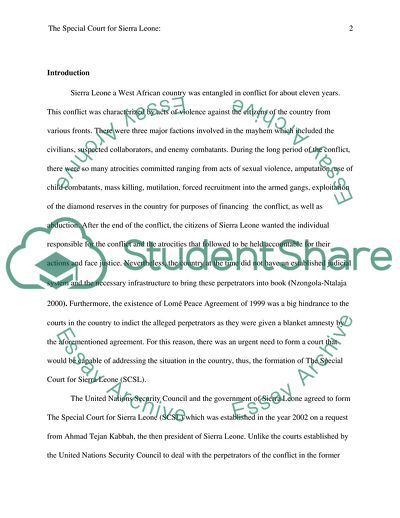Cite this document
(The Special Court for Sierra Leone Essay Example | Topics and Well Written Essays - 2000 words, n.d.)
The Special Court for Sierra Leone Essay Example | Topics and Well Written Essays - 2000 words. https://studentshare.org/law/1771875-evaluating-the-effectiveness-of-the-special-court-for-sierra-leone
The Special Court for Sierra Leone Essay Example | Topics and Well Written Essays - 2000 words. https://studentshare.org/law/1771875-evaluating-the-effectiveness-of-the-special-court-for-sierra-leone
(The Special Court for Sierra Leone Essay Example | Topics and Well Written Essays - 2000 Words)
The Special Court for Sierra Leone Essay Example | Topics and Well Written Essays - 2000 Words. https://studentshare.org/law/1771875-evaluating-the-effectiveness-of-the-special-court-for-sierra-leone.
The Special Court for Sierra Leone Essay Example | Topics and Well Written Essays - 2000 Words. https://studentshare.org/law/1771875-evaluating-the-effectiveness-of-the-special-court-for-sierra-leone.
“The Special Court for Sierra Leone Essay Example | Topics and Well Written Essays - 2000 Words”. https://studentshare.org/law/1771875-evaluating-the-effectiveness-of-the-special-court-for-sierra-leone.


